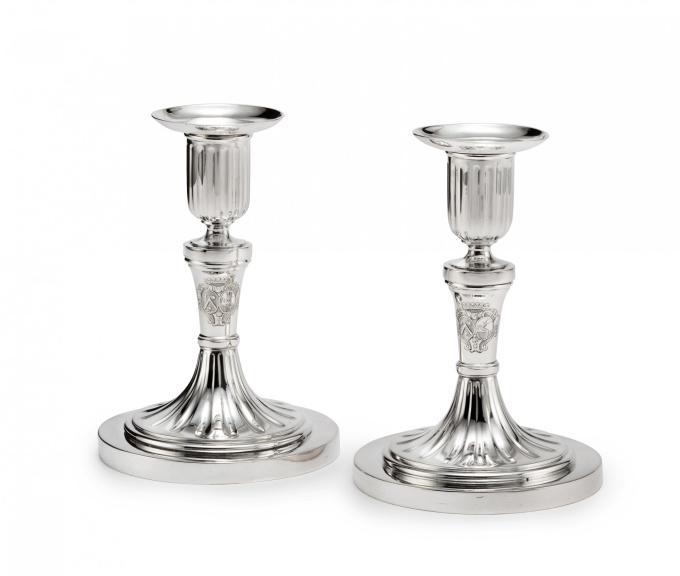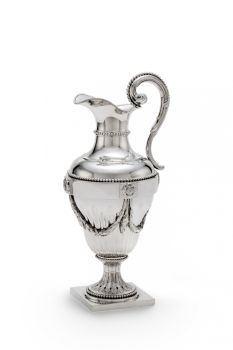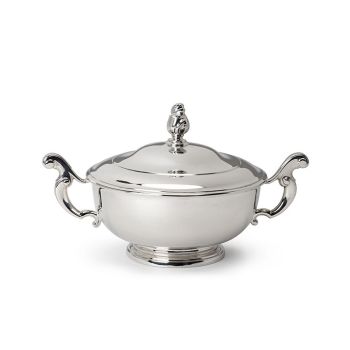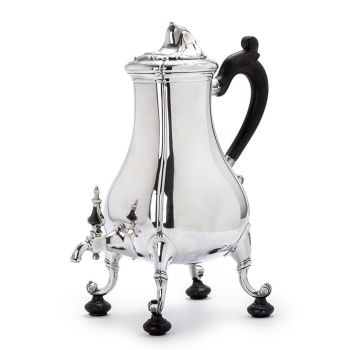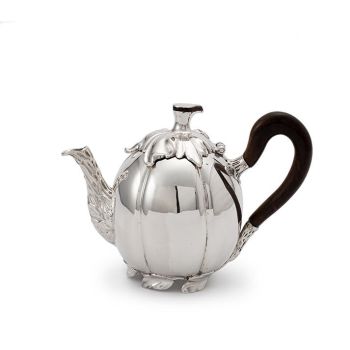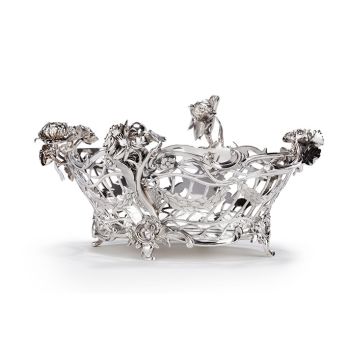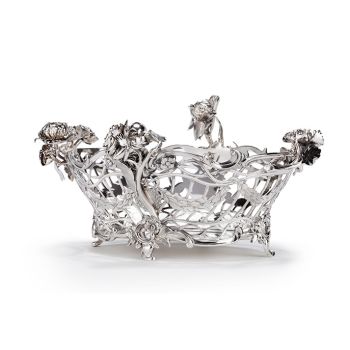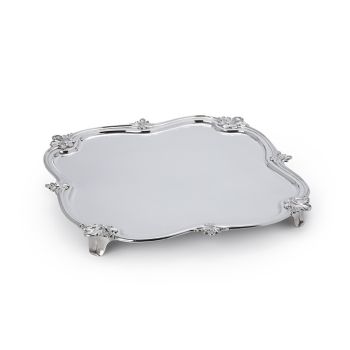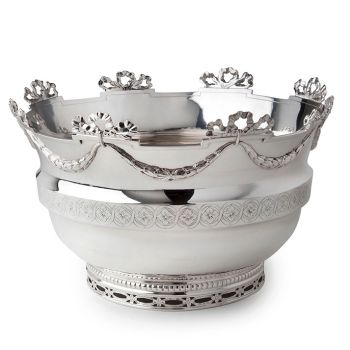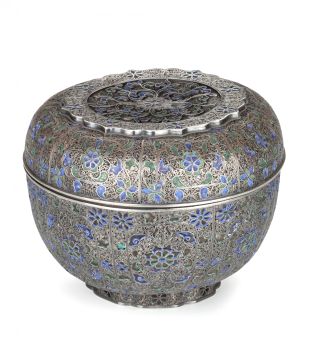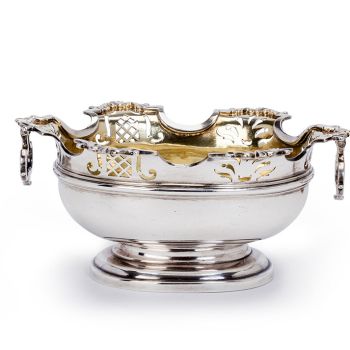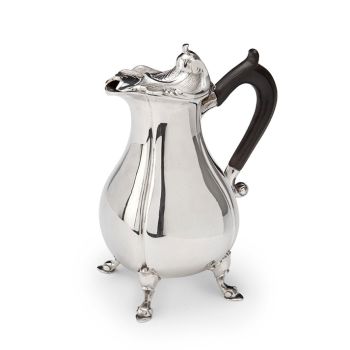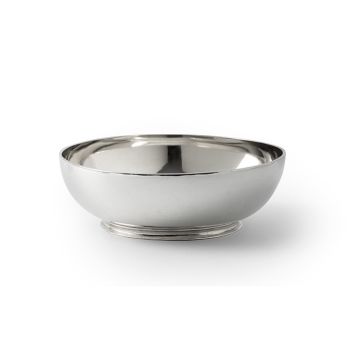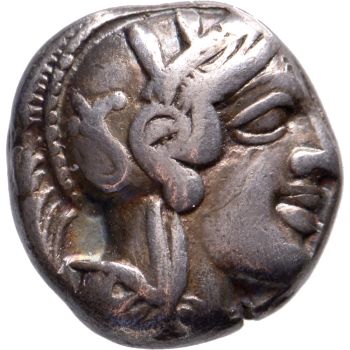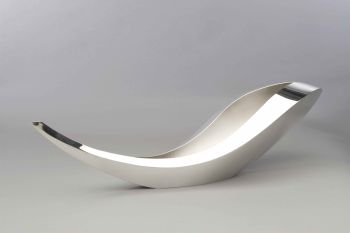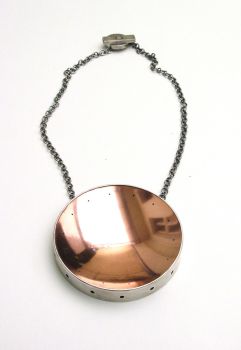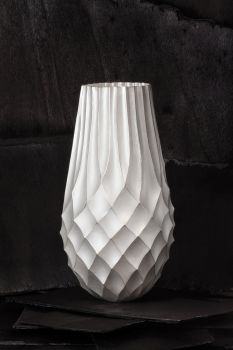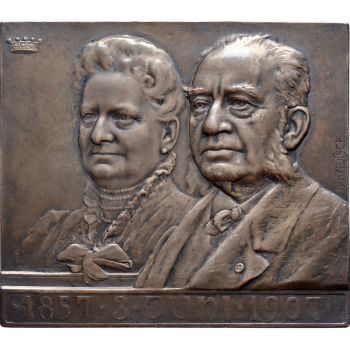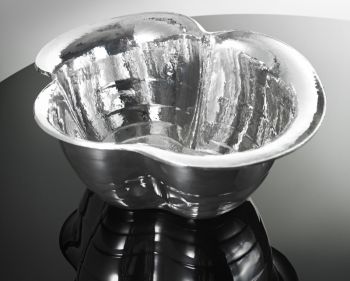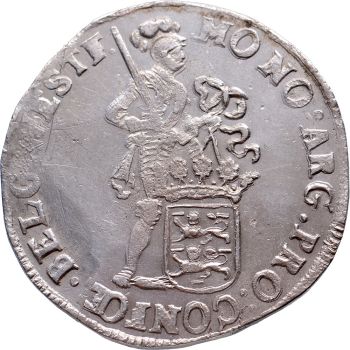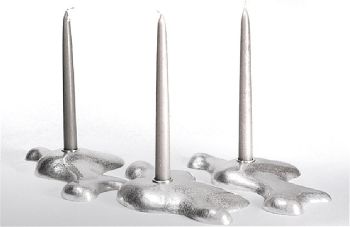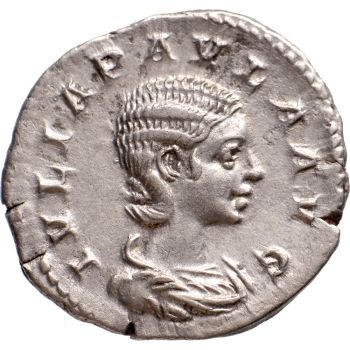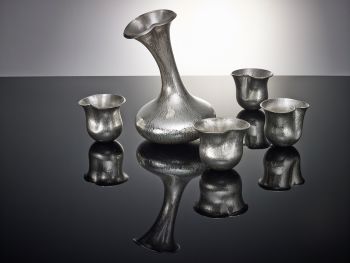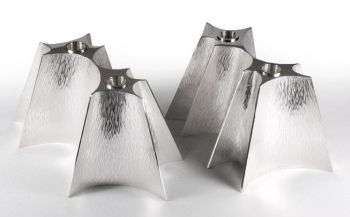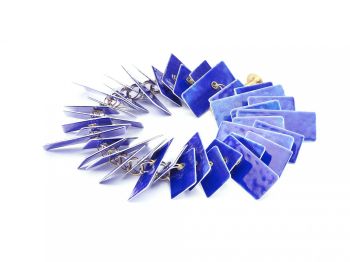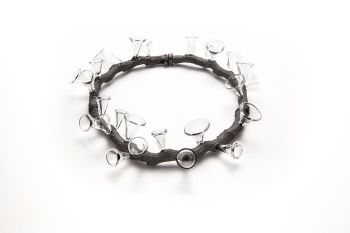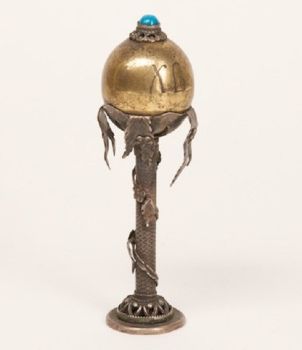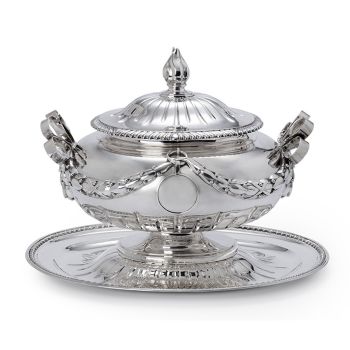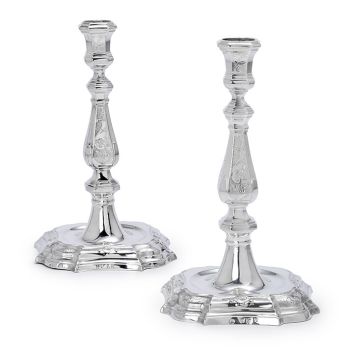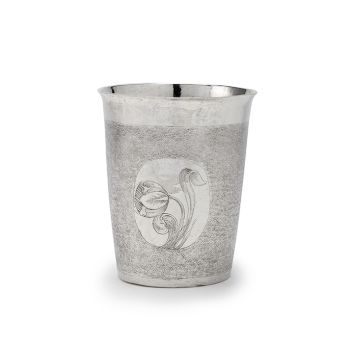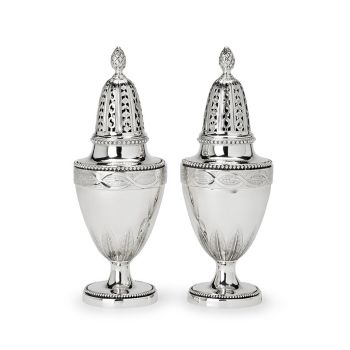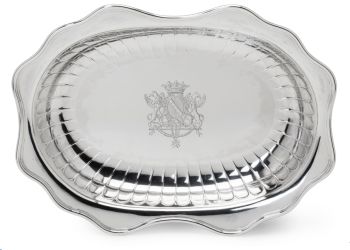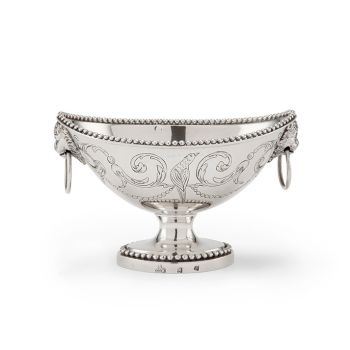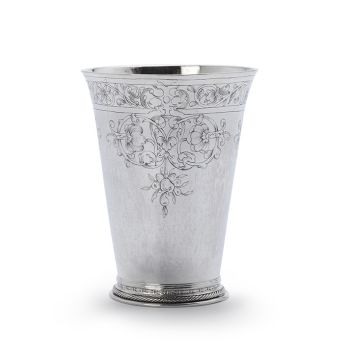Un par holandés de candelabros de plata 1784
Johannes Schiotling
Plata
15 cm, ø 10 cm
Precio a consultar
Jacob J. Roosjen SRI
- Sobre la obra de arteThe candlesticks consist of a round base, which is partially fluted and transitions into the stem, engraved with the coats-of-arms of HOPE and VAN DER HOEVEN. The sconce is fluted in similar outline and has a detachable nozzle, which is engraved with the same coats-of-arms. Fully marked at the reverse of the base, displaying assay stripes.
The coats-of-arms are those of John Hope (1737-1784) and his wife Philippina Barbara van der Hoeven (1738- 1790). This couple married in 1763.
Hope was a famous Amsterdam merchant and banker. He was governor of the East India Company and many times a member of the Board of Aldermen in Amsterdam.
These small candlesticks, possibly made as gaming table candlesticks, were manufactured in 1784, the year John Hope died.
They are included in the catalogue associated with the exhibition at the Rijksmuseum, dedicated to the work of silversmith Johannes Schiotling (Cat. 37).
John Hope (1737-1784) was a fabulously wealthy Amsterdam banker of English origin. In 1763 he married Barbara Philippina van der Hoeven (1738-1789), daughter of a Rotterdam regent. They had three sons. Besides a house at Keizersgracht and Herengracht in Amsterdam and a house in The Hague, John Hope had various estates, namely Groenendaal, which he merged with Bosbeek in Heemstede and Castle Nederhorst, which allowed him to be called Lord of Nederhorst and ’s Gravenambacht since 1774. John's ambitions were not only in trading. In 1765 he became alderman of Amsterdam, in the Amsterdam Council in 1768 and in 1770 he became governor of the VOC. Besides houses John also collected art. In 1771, together with his uncle Adrian, he bought paintings from the estate of their Rotterdam friend Bisschop.
The Bisschop Cabinet was a renowned collection, containing paintings of almost all Northern and Southern Dutch 17th century masters. This collection John Hope filled with paintings by Rembrandt, Ter Borch and Metsu from the collection Braamcamp. He had an extensive collection of sculptures in marble, stone, ivory and plaster, Japanese lacquer ware, porcelain and antique mosaic table tops from the excavation at Tivoli.
Provenance:
-John Hope and his wife Philippina Barbara van der Hoeven, 1784-1789
-Lord Francis Pelham Clinton Hope, Deepdence, Dorking
-Collection Joseph M. Morpurgo, Amsterdam, ca 1960-2016.
Literature:
-Exhibition catalogue, Johannes Schiotling, een Amsterdamse zilversmid (1730-1799), Rijksmuseum Amsterdam, 1976, cat. nr. 37.
J. Verbeek, Antiek, Johannes Schiotling, zilversmid (1730-1799) en John Hope, bankier (1737-1784), 11e jrg nr. 6, 1977, pp 523-524, afb. 12.
-J.W. Niemeijer, ‘De kunstverzameling van John Hope’, Verzamelen in Nederland, Nederlands Kunsthistorisch Jaarboek nr. 32 (1981), pp. 127-232. - Sobre el artistaJohannes Schooling (1730,1799) nació en Gotemburgo, Suecia en 1730. Fue un conocido platero. En 1747 comenzó un aprendizaje de seis años con Olof Fernlöf, uno de los mejores plateros de Gotemburgo. En 1753 aprobó sus exámenes de oficial. No se sabe nada sobre los próximos nueve años; probablemente viajó hasta terminar en Amsterdam en 1762. Schiotling se inscribió como maestro en el gremio de plateros de Amsterdam y se casó. En Amsterdam, un grupo de plateros gravitaba a su alrededor. Su firma produjo numerosas piezas y Schiotling se centró cada vez más en la venta al por menor en lugar de fabricar objetos de plata. Aunque su taller produjo muchos candelabros, vendió muchos objetos diferentes. Johannes Schiotling murió en 1799.
¿Está interesado en comprar esta obra de arte?
Artwork details
Related artworks
- 1 - 4 / 6
Alger Mensma
Urna de café de plata holandesa (jarra de grifo)1752
Precio a consultarJacob J. Roosjen SRI
Salomon Lamberts
Tetera de plata holandesa con forma de calabaza1766
Precio a consultarJacob J. Roosjen SRI
Elisabeth Treskow
Lapislázuli afgano con incrustaciones de oro sobre un soporte de plata1950 - 1960
Precio a consultarJacob J. Roosjen SRI
Frederik Rudolf Precht
Rebanada de pescado plateado holandés1756
Precio a consultarJacob J. Roosjen SRI
Artista Desconocido
Una canasta de dulces de plata holandesa1738
Precio a consultarJacob J. Roosjen SRI
1 - 4 / 24Artista Desconocido
Una canasta de dulces de plata holandesa1738
Precio a consultarJacob J. Roosjen SRI
Elisabeth Treskow
Lapislázuli afgano con incrustaciones de oro sobre un soporte de plata1950 - 1960
Precio a consultarJacob J. Roosjen SRI
Artista Desconocido
Huevo de Pascua de Presentación Ruso de Plata1880 - 1899
Precio a consultarH.W.C. Dullaert Art & Antiques Dealer
1 - 4 / 24Artista Desconocido
Vaso de precipitados de plata holandés del siglo XVII1653 - 1677
Precio a consultarJacob J. Roosjen SRI
Jan Cornelis van Hemert
Canasta de dulces de plata holandesa1799
Precio a consultarJacob J. Roosjen SRI
Frederik Rudolf Precht
Rebanada de pescado plateado holandés1756
Precio a consultarJacob J. Roosjen SRI
Jarich Gerrits van der Lely
Vaso de precipitados de plata holandés1657
Precio a consultarJacob J. Roosjen SRI
1 - 4 / 12

